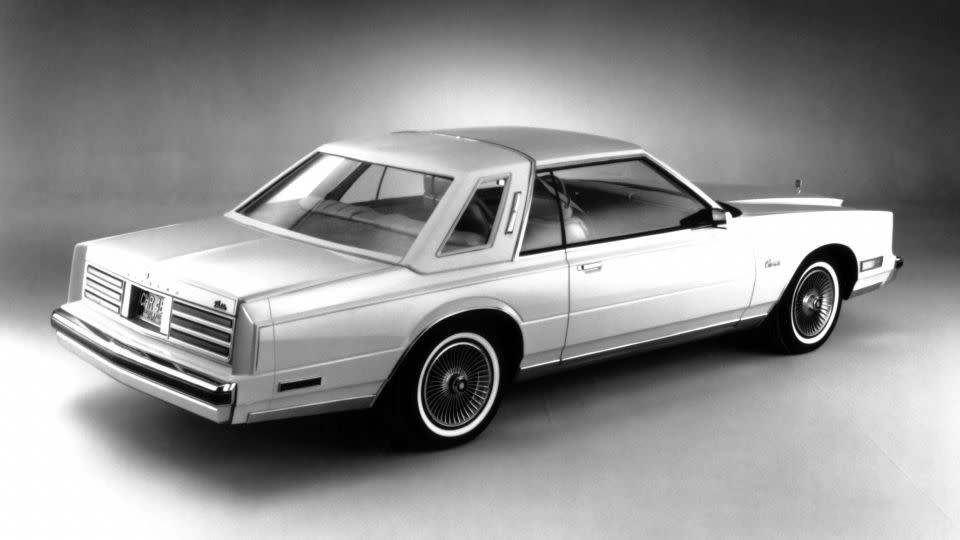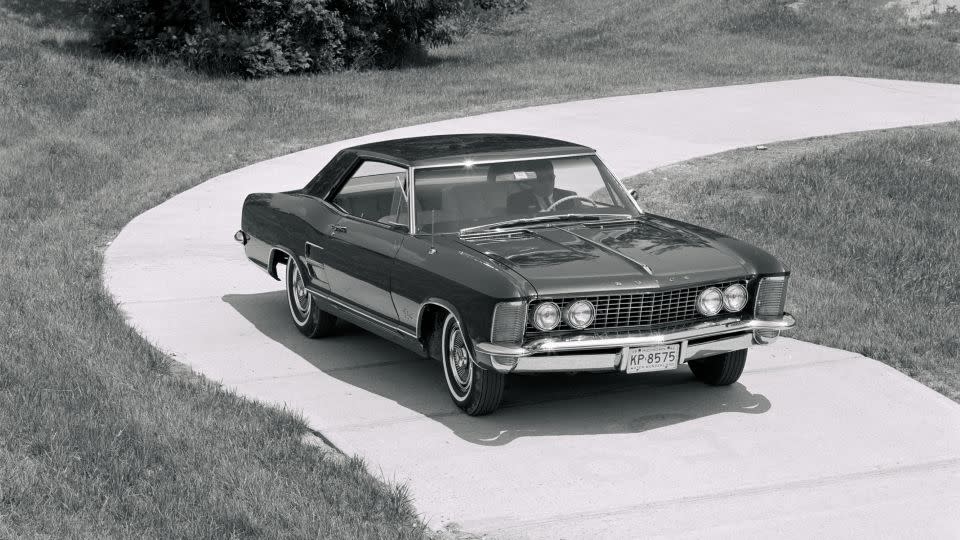During the 1990s, a certain type of American car that had existed for decades became virtually extinct. Big, inefficient, not very practical but strikingly showy and handsome, they still evoke a certain period of over-the-top American style.
These were cars like the Chrysler Cordoba with its “Corinthian leather” seats – roll those Rs like Ricardo Montalbán in the ads – the Buick Riviera, the Cadillac Eldorado and the Oldsmobile Toronado. (Spanish-sounding names were big, too.) Driving one of these “personal luxury cars” made a statement about your superior taste and, also, your carefree lifestyle not requiring the mundane practicality of back doors.
There are still two-door cars today, of course, but they’re almost all high-performance sports cars not intended for comfortable cruising. But the forty- and fifty-year-old “personal luxury coupés” can command higher prices from car collectors than their four-door peers, evidence of their continued allure.
“I think the term started in the 60s,” Brian Rabold with the collector car company Hagerty, said of so-called personal luxury coupés. “But that was the heyday in the 70s. There were still some offerings, but they sort of started to decline in the in the 80s and 90s.”
The first touchscreen
Long, low and stylish, they were the design and technology showpieces for their respective car brands. In 1986, the Riviera offered the first touchscreen in a production car, according to GM. Car companies could do that because these cars sold in lower numbers, even then, than four-door models.
“Because you had lower volumes you could you could afford to put in higher technology,” said Kevin Kirbitz, a former GM engineer who’s now head of the company’s heritage collection. “You commanded a premium price anyway.”
Over the years, these cars left their mark. Even today, one of these big two-door American models has a certain allure at a car show. With its long hood, ample chrome and two massive doors allowing awkward access to often reasonably-sized – once you manage to get in there – back seats, they still make a statement.
For car designers, two-door models can offer more striking proportions to play with, long hoods that evoke power and tapered, aerodynamic back ends.
“They can get a more raked windshield,” said Kirbitz. “They can get that longer proportion that they’re looking for.”
Many models were offered with either a two- or four-door body. Today, the two-door is generally worth about 67% more to modern car collectors, attesting to the style’s appeal. Of course, someone buying a 50-year-old car is also probably even less concerned with practicality than shoppers were back in the day, Rabold pointed out.
Enter the Thunderbird
Two-door cars have existed for about as long as cars have had doors but Rabold credits the real upsurge in “personal luxury” styling to the Ford Thunderbird. Introduced in 1955 as somewhat of a competitor to the Chevrolet Corvette. The Thunderbird soon went in a different direction. While the Corvette evolved into a serious sports car, Ford designers added back seats and turned the Thunderbird into a comfortable cruiser. The style quickly caught on.

“That set the stage and then a lot of cars followed on after that,” Rabold said. “And so every manufacturer kind of had to have an entry to compete with that segment.”
Four-door cars were still more common, but a two-door car said something about you, said Scott Krugger, vice president of design for Stellantis’s Dodge division.
“As time went on, two-door cars became an individual statement, or a performance statement, or a specialty statement, where the four-door was more of that practicality need, that family need, and they kind of diverged that way,” he said.
The run of roomy two-door models lasted a few decades but, by the 1990s, something had changed. Today, it’s rare to see a two-door car that isn’t a performance model like the Mustang or Corvette. Even the cheapest cars on the market, like the Nissan Versa and Kia Rio, come with four doors. Back doors, even on pickups, are just a default today.
Why did they become extinct?
A number of factors have conspired to push two-door cars to their current niche status. First, the rise of SUVs has pushed cars of all sorts – as in, personal vehicles that are not trucks, vans, or SUVs – to the fringes, regardless of how many doors they have. Today, actual cars make up less than 20% of all new vehicles, according to data from Cox Automotive.
Also, child safety regulations have, no doubt, played a major role, said Kirbitz. By the 1980s, child safety seats were required throughout the United States, so the days of kids clambering over the folded front seats to buckle themselves – or not – into the back seats are over.
Today, if you have a two-door car and you have kids, you also have a backache. You’ve got to lean awkwardly into the back to buckle the youngsters in and, before that, to install the seat itself.
While some two-door cars used to be bargain items – the cheapest entry-level cars were almost always two-door hatchbacks – today two-door models are seen mostly in European luxury car showrooms.
BMW and Audi have two-door models available as both hardtops and convertibles. Mercedes-Benz is just introducing the new CLE Coupe. It keeps a non-sports-car two-door in American Mercedes dealerships because, practical issues aside, there is still a market for it. Some customers still prize style over practicality, said Gorden Wagener, head of design for Mercedes-Benz.
“A car is a representation of yourself and your taste,” he said. “And you bring that out more expressively with the coupé, right?”
For more CNN news and newsletters create an account at CNN.com
Credit: Source link
